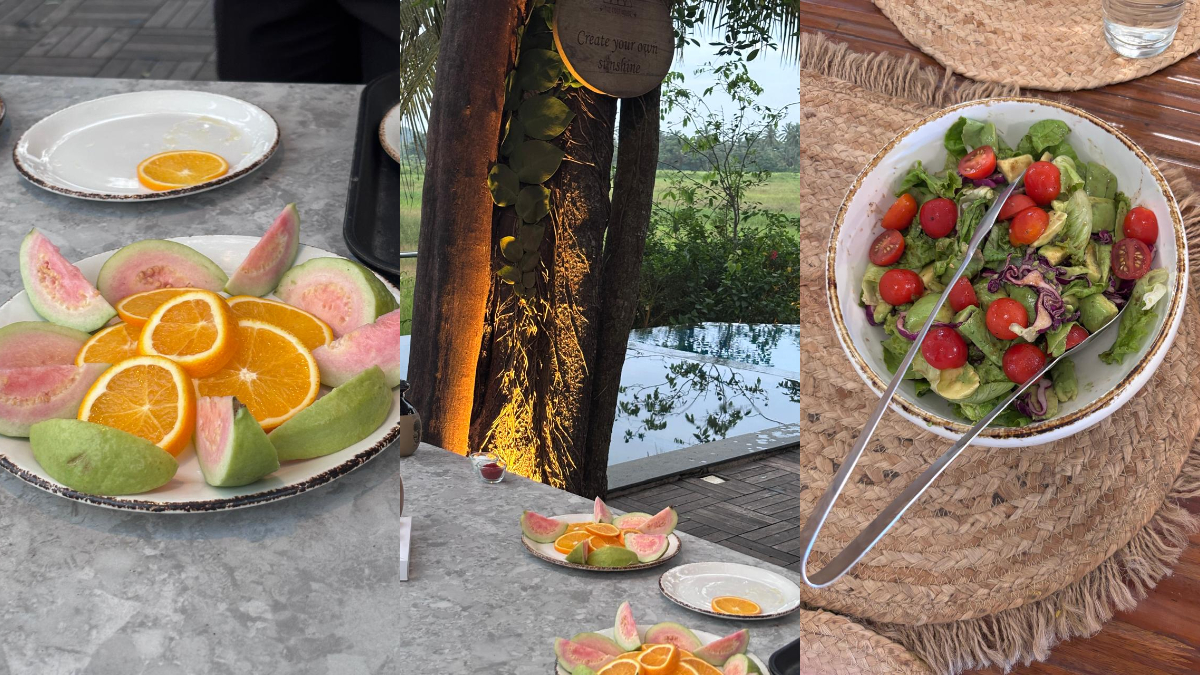The best thing about homestays is that it gives you everything in abundance and there isn’t much formality. And I guess that’s what makes it different from a five-star hotel. Traditional, yet modern, heritage homes converted into homestays is the best way of understanding the culture of the place.
The First House of Saligao, Goa is one such place where you need to just switch on your slow-down button and feel refreshed. And let me tell you there is more to this place than just beaches. If you wish to experience the farm to fork concept of eating this is indeed the place.
Farm to fork food at The First House
No fancy food, but delicious home-cooked meals made with the key ingredient called love. Though this concept has now become a fixture in the culinary lexicon. And it just may sound fancy to some people, but this place truly offers the food which is made only with local produce whether its avocados, kale or grapefruit, everything is harvested from their own farms.
A tour on hydroponic farming
The First House, Goa follows the hydroponic farming method for its fresh produce. You will be surprised to see that around 40 species of leafy greens and 10 to 12 fruiting crops are being cultivated in a 10,000 square foot hydroponic farm in this 129-year-old Portuguese villa.
It is a technique that was developed in Israel. Medical doctor-turned-hydroponic farmer, Kashyap Gupta will take you around this farm and make you identify the fresh greens whether it is kale, mustard, Thai coriander or lettuce. Talking about how hydroponic farming works he says, “You take the nutrients that the plant requires and dissolve it in water and give it to the plants. So that the plants take the minerals directly from the water and help them grow. And what happens is that because it’s grown in water that is constantly recycled, you end up saving 90 to 95 percent of water which a commercial farm doesn’t have.”
He explains that the way water is becoming scarce and the climate is changing, you need a way which is sustainable. “By doing it inside the green-house and re-circulating the water we are actually saving the planet.” And as the tour around the farm comes to an end, you will be served a bowl of salad with all things fresh.
Not, luxury, but simple comfort
Tucked away in the idyllic village of Saligao, this Portuguese colonial home built in 1896, is not just about luxury, it is an experience that you will never forget. It’s a perfect blend of Goan-Portuguese culture and contemporary luxury. The fine architecture, including antique furniture will send you to the world that is long forgotten. From the time you step into this homestay, there is something absolutely magical about the place including the warmth spread by the host Yogi and Suchna.
The high ceiling with large verandas with sunlight coming in adds to the magic of the place. It’s been four years that the villa was converted into a homestay. “We got the work and everything done through COVID. Coming to the architecture, we wanted to keep the Portuguese concept intact. All the furniture was bought locally. We were very clear from the beginning that every single thing should be a perfect blend of Goan-Portuguese culture. We didn’t want the villa to look like home in Bali.”
About Saligaon village
The Portuguese modified the original name of the village from Salgaon to Saligao. Sal means wooded forest and gao means village. Saligao – a wooded village with an abundance of fruit bearing trees and various other plants.


)
)
)
)
)
)
)
)
)



